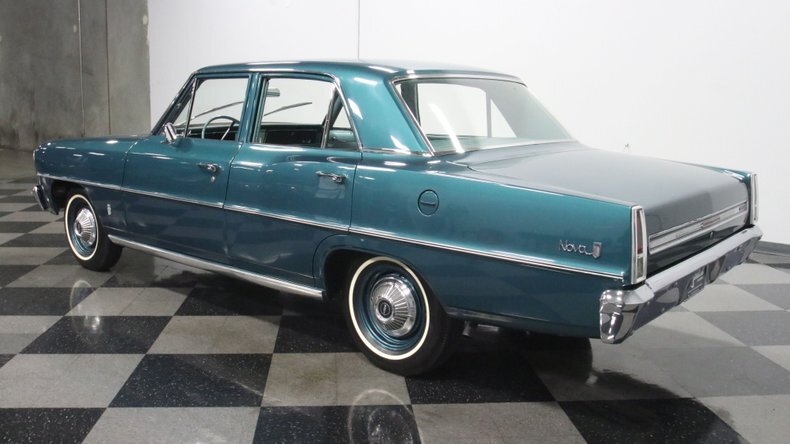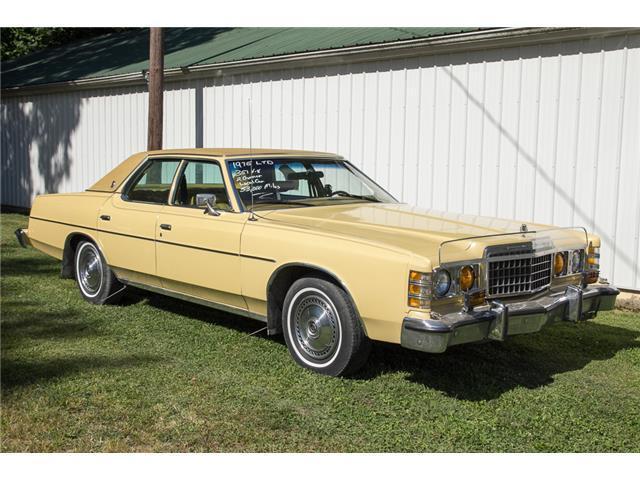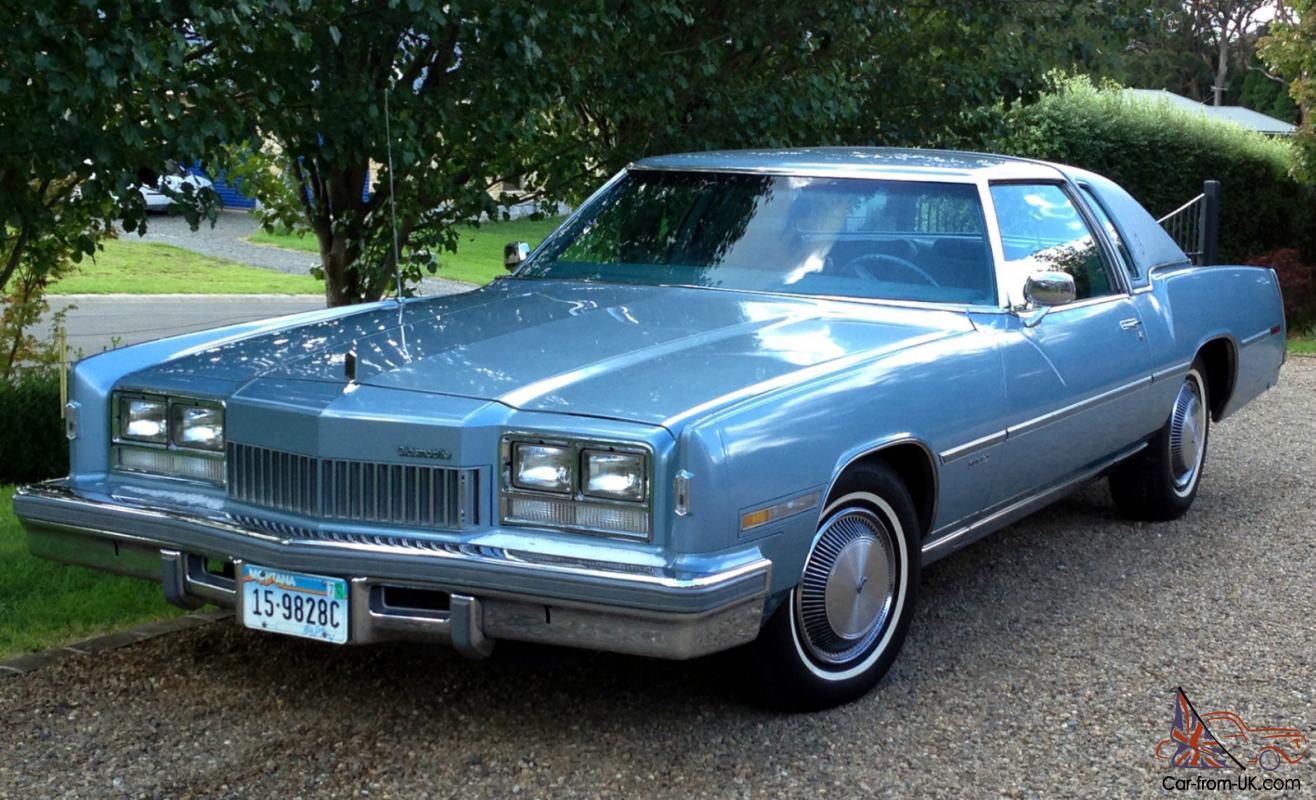Imagine a small family, one kid, parents buying their first new car in 1967. That family very possibly would be buying a '67 Chevy II "Nova" sedan with the 2.5L (153 c.i.) four-banger having 90 HP, with a "three on the tree" manual transmission. The car cost about $2,500, depending on options, which were probably few. It had a radio and heater, but no air conditioning. Cheap vinyl seats, drum brakes, no cruise control, or much of anything else. It was stripped down. In today's dollars, that $2,500 would be about $21,000 based on CPI growth over the 54 years since this hypothetical family bought the car.
The Nova has a wheelbase of 110", but is only 163" long. It weighs 2,700 lbs.
The Nova is slow as a rock - zero to 60 in 12-14 seconds, and even with the best efforts of the driver, it wouldn't get much more than 25 mpg on the highway, and 16-18 mpg around town. Gas is about $0.32/gal.
If one wanted to max out that Nova (Chevy II), it could be had with a 350hp, 327 c.i. V8. With the optimistic ratings of that era, the hopped up Nova would do 0-60 in about 7 seconds - very quick for the time.
Fast forward to 2021. That guy's grandson is likely looking at a new Honda Civic sedan, with a base sticker price of $23.170 - a little bit more than the Nova in constant year dollars.
The Civic is heavier, at 2,876 pounds, and is also almost fifteen inches longer, at 177.9", with a wheelbase of 106.3." Interestingly, the "overhangs" on the Civic total 71.6", vs. 53" for the Nova. The presence of a frame in the Nova creates the potential for greater space between the axles and more room in the passenger compartment.
The base Civic will hit 60 mph in a little over 7 seconds, and get a combined fuel economy over 30mpg. It is almost ludicrous to talk about the technological improvements incorporated into the Civic. The brakes, handling, reliability, corrosion resistance, and lower maintenance costs are incredible, but again, we're talking about more than 50 years of evolution.
The top-spec Civic - the Type R, - has an honest 307 HP, and rockets to 60 in a tick over 5 seconds.
It's not really rational to complain about how expensive cars are today. There are a cornucopia of top end cars that do not really have counterparts from the distant past, but for working-class buyers the financial burden of cars today is not significantly greater than in past generations. And when you consider the vast improvements in performance, efficiency, reliability, and ease of maintenance, today's cars are a relative bargain.
Nevertheless, you gotta be out of your copulating mind to spend seventy grand on a pickup truck with a candy-ass five foot bed. Sorry, just my opinion.
The Nova has a wheelbase of 110", but is only 163" long. It weighs 2,700 lbs.
The Nova is slow as a rock - zero to 60 in 12-14 seconds, and even with the best efforts of the driver, it wouldn't get much more than 25 mpg on the highway, and 16-18 mpg around town. Gas is about $0.32/gal.
If one wanted to max out that Nova (Chevy II), it could be had with a 350hp, 327 c.i. V8. With the optimistic ratings of that era, the hopped up Nova would do 0-60 in about 7 seconds - very quick for the time.
Fast forward to 2021. That guy's grandson is likely looking at a new Honda Civic sedan, with a base sticker price of $23.170 - a little bit more than the Nova in constant year dollars.
The Civic is heavier, at 2,876 pounds, and is also almost fifteen inches longer, at 177.9", with a wheelbase of 106.3." Interestingly, the "overhangs" on the Civic total 71.6", vs. 53" for the Nova. The presence of a frame in the Nova creates the potential for greater space between the axles and more room in the passenger compartment.
The base Civic will hit 60 mph in a little over 7 seconds, and get a combined fuel economy over 30mpg. It is almost ludicrous to talk about the technological improvements incorporated into the Civic. The brakes, handling, reliability, corrosion resistance, and lower maintenance costs are incredible, but again, we're talking about more than 50 years of evolution.
The top-spec Civic - the Type R, - has an honest 307 HP, and rockets to 60 in a tick over 5 seconds.
It's not really rational to complain about how expensive cars are today. There are a cornucopia of top end cars that do not really have counterparts from the distant past, but for working-class buyers the financial burden of cars today is not significantly greater than in past generations. And when you consider the vast improvements in performance, efficiency, reliability, and ease of maintenance, today's cars are a relative bargain.
Nevertheless, you gotta be out of your copulating mind to spend seventy grand on a pickup truck with a candy-ass five foot bed. Sorry, just my opinion.





